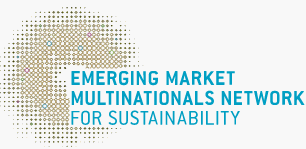China SDG Finance International Forum 2023 successfully held
2023-09-18China Sustainability TribuneHu Wenjuan0

Trends and Prospects
Financial Support for Green and Low-Carbon Transition

Beate Trankmann, UNDP Resident Representative in China, shared in her opening remarks that China has taken some important steps to see lasting transformation in the long-run. Since 2016, the country has established a comprehensive policy framework to green its financial system. However, further progress is needed to enable the low carbon transition of both China and the world at the scale needed. As highlighted in the 2022 G20 Sustainable Finance Report, we need finance to not only drive “pure green” activities, but also to support the transformation of hard-to-abate sectors such as energy, industry, and chemicals.

Zhang Yi, Deputy Director, CICETE, said he looked forward to continuing and deepening the China-UNDP SDG finance partnership. First, we should strengthen cooperation with policymaking and regulatory agencies to improve laws, policies and regulatory frameworks conducive to SDG finance. Second, we need to support research in relevant areas and share outcomes on developing evaluation standards and assessment systems. Third, we will collaborate with local governments, industry associations and financial institutions to build effective mechanisms for cooperation between government, financial institutions and enterprises. We will demonstrate innovative SDG finance projects and implement related business. Fourth, we should continue to strengthen cooperation with international organizations like UNDP to draw from global development experience, engage in global governance of SDG finance, and contribute Chinese wisdom and solutions.

Exploration and Reflection
Transition Finance Facilitates Sustainable Development




Achievements and Improvements
Promoting Better Development of Transition Finance
As an important outcome of this forum, the Global Green Finance Development Index and Country Rankings and the Research on Transition Finance Supporting Local Transition Development - Cases of Inner Mongolia and Suzhou were released with great fanfare during the forum. They will provide effective references and guidance for finance to facilitate green and low-carbon transition.
Regarding transition finance supporting local transition development, the International Institute of Green Finance at the Central University of Finance and Economics put forward some thoughts based on previous research:
First, we should consider local transition requirements from three aspects - practical needs, needs to break bottlenecks in local development, and directions of industrial transition development - to profoundly understand that green transition is an internal requirement for high-quality economic development.
Second, we can analyze local green transition from perspectives such as transition timetables, transition roadmaps, industrial differences, path differences to form a transition analysis more aligned with development needs, thus constituting important directions and guidance for transition finance to support local transition.
Third, we need to take into account characteristics of finance itself and incorporate financial security, liquidity, profitability and other objective factors into the analytical framework.
For example, considerations of investment return for green transition, differences in financing for leading enterprises and SMEs in industries, foundational development of green finance and transition finance, complex and diverse financial risks, etc.
Fourth, based on the above comprehensive considerations, we should identify important paths for transition finance to support local transition. Overall, important contents include standards systems, policy systems for collaborative production and finance, market innovations focusing on transition benefits and cost savings, risk management. More importantly, incorporating the aforementioned regional and financial characteristics as well as other factors into the overall direction of deepening transition finance will better promote local transition development.
The forum also released the Global Green Finance Development Index and Country Rankings by the International Institute of Green Finance at CUFE. The top ten countries by overall score are the UK, France, China, Germany, Sweden, Japan, Canada, Denmark, the Netherlands and Italy, followed by Singapore, the US, Norway, Austria, Spain. In general, top-ranking countries are mainly developed economies, reflecting that countries with more developed economic conditions and financial markets have more prominent green finance development. It is worth noting that China is the only developing country among top ten. Portugal ranks at the median, with developed economies accounting for 77.78% of countries above the median, demonstrating the more pronounced role of economic and financial foundations in promoting green finance development. Among developing countries, China's green finance development is outstanding, ranking 17 places ahead of Mexico in second place. Countries ranked relatively low are mainly concentrated in Africa, the Middle East and Central Asia.
(This event was live streamed by National Business Daily, CaiLian Press's Whale Media platform, and the Institute of Political and Economic Studies.)
Best Practices
- The 100-year brand — Air Liquide also has a sense of juvenile
- Beijing Public Transportation Corporation: Developing green transportation to build a harmonious and livable capital
- CGN: Building a modern factory in barren deserts and developing a new win-win cooperation model along “Belt and Road”
Upcoming Event

All the materials on the site “Source: XXX (not from this site)” have been reprinted from other media. They do not imply the agreement by the site.
All the materials with “Source: CSR-China Website” are the copyright of CSR-China Website. None of them may be used in any form or by any means without permission from CSR-China Website.
GoldenBee Official WeChat
Copyright © Csr-china.net All Right Reserved.
京ICP备19010813号










